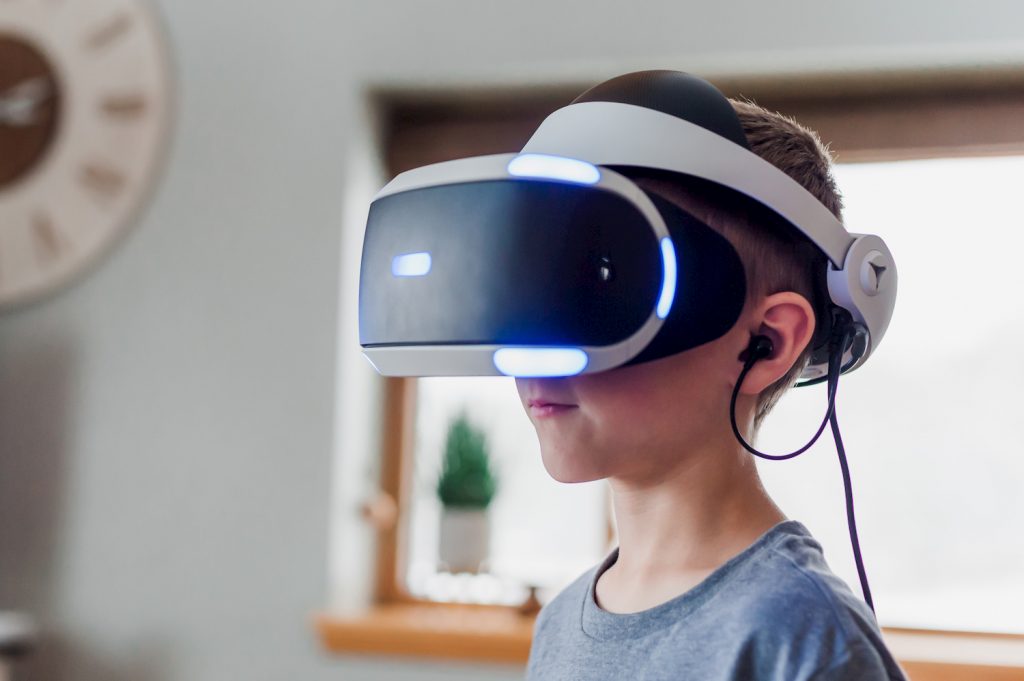
It might seem like virtual reality (VR) technology has only been around for a few short years.
However, the VR systems and headsets we know today have been under development for decades. The earliest progenitor of today’s VR systems actually dates back to 1957 with a patent filed by Martin Heilig for a head-mounted stereoscopic television device.
Virtual reality is a way to create a computer-generated environment that immerses the user into a virtual world. When we put on a VR headset it takes us to a simulated set-up making us completely aloof from the actual surroundings.
While from an experiential perspective we do understand the concept but what about the technical backend that goes into making it all possible. Do you really know how virtual reality works? In this blog, we will understand the technology behind virtual reality and the basic terminology surrounding the development of a simulated ecosystem for a head-mounted display (VR headset).
The scientific basics of virtual reality
At its core, VR technology has only one purpose: to simulate settings and environments realistically enough to fool the human brain into accepting them as reality. From a scientific standpoint, that all begins by understanding how our brains interpret the things we see to develop a mental picture of the world around us.
Without getting into too much detail, the simplest explanation is that our perception of reality is based on rules we develop using our experiences as a guide. For example, when we see the sky, it tells us which direction is “up”. When we see objects we can identify, we can use their size relative to one another to judge distance. We can also detect light sources by picking up on the shadows cast by the objects around us.
VR designers can use those conventional rules to create virtual environments that conform to our mental expectations of reality. When they do, the result is a seamless experience that we interpret as “real”. Our body becomes responsive in real life—our heart rate slows down during activity or falls after intense exercise because there’s no denying the sensation of being physically exerting ourselves at this point (we feel pain for instance). As such new algorithms developed with Oculus’ SDK are helping provide more accurate results from various tests including head tracking, eye movement detection etc… This gives headsets like Project Morpheus significantly higher degrees than humans could ever hope replicate naturally within an environment under normal circumstances!
The Basics of How VR Works:
The primary subject of virtual reality is simulating the vision. Every headset aims to perfect their approach to creating an immersive 3D environment. Each VR headset puts up a screen (or two – one for each eye) in front of eyes thus, eliminating any interaction with the real world. Two autofocus lenses are generally placed between the screen and the eyes that adjust based on individual eye movement and positioning.
The most important piece of a virtual reality kit is the headset, a device like a thick pair of goggles that goes over your eyes.
All headsets need to be used alongside a good quality pair of headphones, and there are other optional accessories from hand controllers to treadmills that are all designed to enhance your simulated experience of being in another world. Hand controllers translate your real-world gestures into whatever game or application you’re using, although standard gaming joypads can also be used. Other devices included include: a mouse + keyboard controller; head mounted display which allows more detailed directions such as how long it takes to go left at street signs); joystick/joystick accessory – helps users control camera movements by controlling sticks & trackballs (they’re not physically attached but only allow them feel), plus additional input capabilities provided via touchscreens through third party software bundles The first part brings us to handsets because they ensure we get accurate readings during gameplay while still allowing people to interact freely online without interacting with someone else too much. With so many platforms currently available these days why should developers stay away? Most will just keep adding service
What can you expect in future?
In future, we will see rapid advancements in creating a truly immersive digital experience. With major players like Google, Microsoft, Oculus, and HTC making tremendous efforts to improve the current capabilities, we are not far from achieving a virtual reality that would feel so much better than the real world.
The VR technology presents countless opportunities for brands to create breathtaking marketing content. Using this approach, they won’t only win over customers but also establish themselves as the leader in innovation. If would like to develop a VR app for your business then feel free to get in touch. With over 10 years of experience in mobile technologies, we can make every dream a reality.
